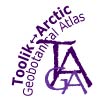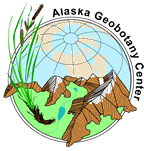Plant Functional Types
Glossary - Braun-Blanquet Names - Plant Functional Types - Topographic Gradients
Classification, analysis and modeling of vegetation often requires that the great diversity of plant species reduced to a much smaller number of logical categories. The term plant functional type (PFT) is a general term that groups plants according to their function in ecosystems and their use of resources. The PFT concept has gained favor particularly among modelers who are trying to predict how vegetation will respond to the effects of climate change (Smith et al. 1997). PFT approaches can embrace phylogentic, (taxonomic groups such as willows, maples, sedges and grasses) and / or life-form characteristics, that can include such things as broad morphology (physiognomic) characters (e.g., trees, shrubs, herbs, lianas, graminoids, etc.) or more specific properties, such as plant size (short vs. tall), leaf size (microphyll, macrophyll), leaf shape (needleleaf, broadleaf), seasonality of leaves (summergreen, evergreen, deciduous), leaf hardness (malacophyll, sclerophyll), light or shade tolerance, rooting depth, the position of the over-winter perennating buds (e.g., phanerophytes, hemicryptophytes). One of the most comprehensive approaches is that of Eugene Box (Box 1981), who defined 90 PFTs based on their environmental response to eight temperature and precipitation indices. This list was later grouped into 15 broader PFTs that were more appropriate for modelers to define the various global biomes (Box 1996).
Tundra PFTs used for grouping plant species into categories useful for naming mapping units:
The Circumpolar Arctic Vegetation Mapping Team identified a group of PFTs that are useful for naming major categories of tundra vegetation that appear in the legend of the CAVM. These categories are also are used to group the plant species characteristic of each plant community.
Shrub: A woody perennial plant differing from a tree by its lower stature and generally producing several basal stems instead of a single trunk. Subcategories are based on height:
- Tall shrub: Greater than 2 m tall
- Low shrub: 0.4 – 2 m tall
- Dwarf shrub: Less than 0.4 m tall.
- Erect dwarf shrub: Less than 0.4 m tall with erect stems.
- Hemiprostrate dwarf shrub: Very short, generally less than 0.15 m tall, with a semi-erect or trailing stem (refers mainly to Cassiope tetragona).
- Prostrate dwarf shrub: Lying flat on the ground.
Herb: A flowering plant with no significant woody tissue above ground; includes forbs and graminoids.
- Forb: A broad-leaved (not grass like) non-woody flowering plant.
- Graminoid: A grass-like harbaceous plant with leaves mostly very narrow or linear in outline. Includes grasses, rushes and sedges.
- Grass: Member of the plant family Poaceae.
- Rush: Member of the plant family Juncaceae.
- Sedge: Member of the plant family Cyperaceae.
- Non-tussock sedge: A sedge that does not form tussocks; usually growing with rhizomes, stolons or singly.
- Tussock sedge: A sedge forming tussocks; refers mainly to Eriophorum vaginatum.
Cryptogam: A plant (in the wide sense) that reproduces by spores. Includes mosses, liverworts, lichens, club mosses and horsetails. (Note: Lichens are not plants. Taxonomic reorganization of the old “Plant Kingdom” now place the fungal and algal components of lichens in taxonomic clades separate from the Plantae. However, in vegetation studies they have been traditionally grouped and studied together as part of the cryptogamic layer of the plant canopy.)
- Bryophyte: Plants belonging the Phyla Bryophyta (mosses), Hepatophyta (liverworts) and Anthocerophyta (hornworts).
- Pteridophyte: A seedless vascular plant (one with xylem and phloem); includes club mosses, horsetails, and ferns.
- Lichen: A symbiotic association of algae and fungi.
For other purposes, each of these categories can be subdivided further. For example, shrubs can be divided into evergreen shrubs and deciduous shrubs.



